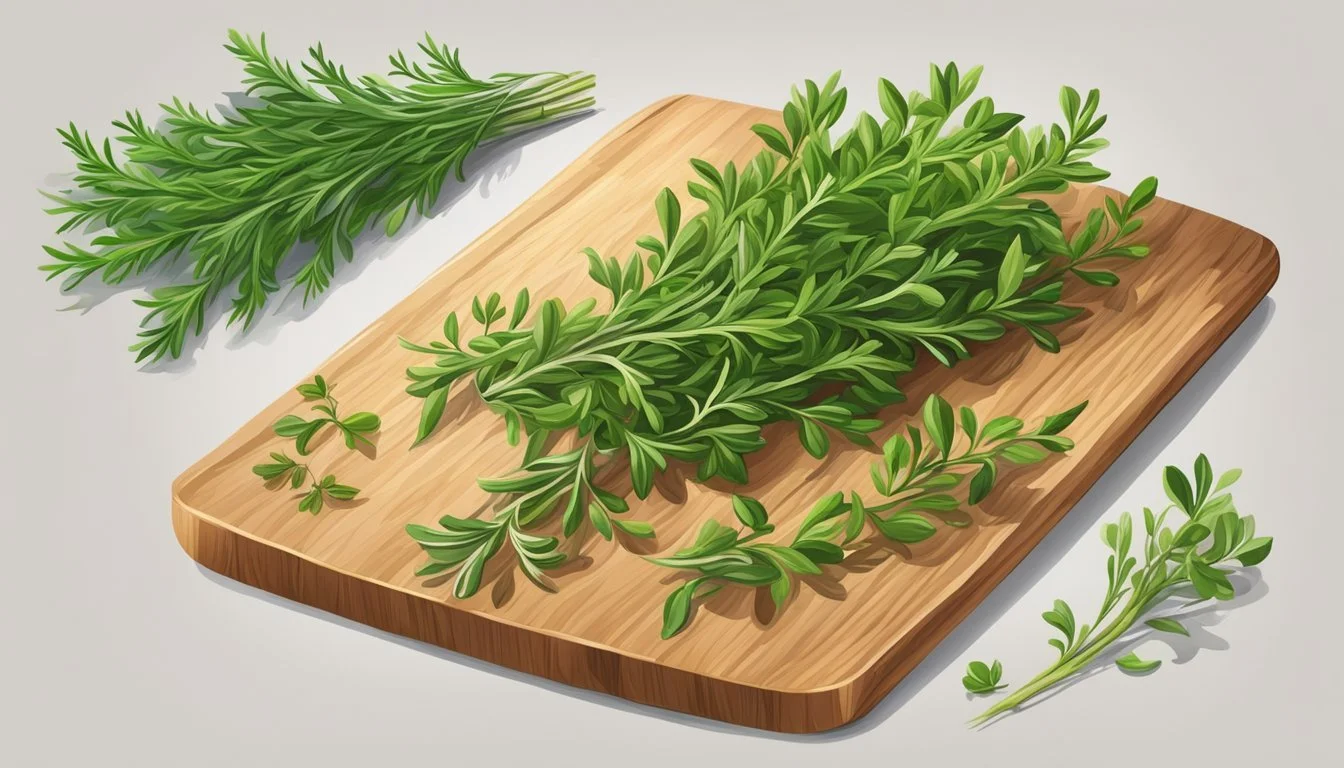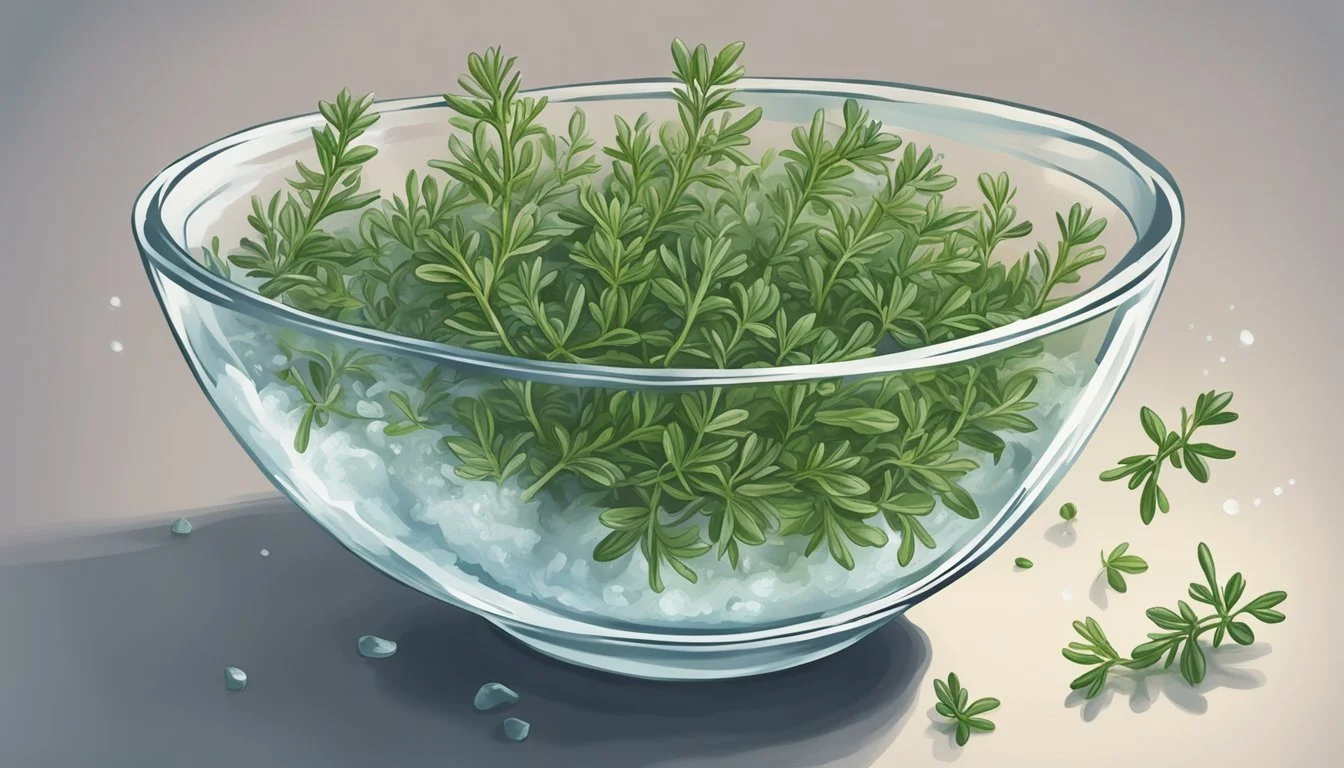Reviving Limp Thyme
Techniques for Restoring Freshness to Your Herbs
Thyme is a versatile herb widely appreciated for its aromatic quality and its ability to add depth to various dishes, both as a seasoning and garnish. Its delicate leaves, however, can sometimes become limp due to a range of factors including inadequate watering, incorrect lighting, or nutrient deficiencies. Reviving limp thyme is not only possible but also a necessary step to ensure that the flavors of this herb are preserved and can be fully utilized in culinary applications.
Gardeners and cooks alike might encounter thyme that appears wilted or less than vibrant. To address this, certain conditions must be met to restore the herb's vitality. Thyme thrives with sufficient sunlight, typically requiring a minimum of six hours of direct exposure daily. Watering practices are equally crucial; a schedule that ensures the soil remains moist but not waterlogged is essential to avoid root rot and maintain healthy growth.
The location and soil quality are also paramount for the rejuvenation of thyme plants. Spacing individual plants adequately allows for ample airflow and light penetration, which are vital for preventing disease and promoting robust growth. By considering these factors, limp thyme can be coaxed back to a state of crispness and aromatic intensity, ready to enhance dishes with its characteristic flavor.
Understanding Thyme
When considering the role of thyme in cooking and medicine, it's essential to explore its botanical characteristics, diverse varieties, comparison with other herbs, and health contributions.
Plant Profile: Thyme
Thyme, a small perennial herb in the mint family, is prized for its aromatic leaves. This Mediterranean herb adapts well to various climates, yet flourishes under full sun and well-drained soil conditions. The plant's green-gray leaves are small yet packed with a fragrant punch that enhances a multitude of dishes.
Varieties of Thyme
Thyme comes in numerous varieties, each with distinct flavors and uses. Lemon thyme offers a citrusy edge ideal for seafood and poultry, while French thyme is favored in European cuisines. Creeping thyme serves as both a ground cover and a culinary delight. These types represent just a sliver of the abundant types of thyme available.
Thyme vs. Other Herbs
Thyme's flavor profile is uniquely earthy and slightly minty, distinguishing it from relatives like rosemary, oregano, and sage. Although thyme shares the mint family lineage with parsley, basil, and mint, its taste and cooking applications set it apart, making it a versatile choice in the aromatic herb world.
Health Benefits of Thyme
Thyme is not only a flavor enhancer but also a source of health benefits. It's rich in antioxidants and compounds, such as thymol, that may aid in reducing blood pressure. Integrating thyme into a diet contributes to an array of health improvements, affirming its status beyond the kitchen.
Cultivating Thyme
Successful thyme cultivation results in a healthy, aromatic herb perfect for both culinary and ornamental uses. Essential aspects include proper soil preparation, consistent watering, ample sunlight, and routine maintenance.
Planting Thyme
Thyme thrives in well-drained soil, which prevents root rot and encourages healthy growth. When planting thyme, start with soil that has ample organic matter and a pH that's neutral to slightly alkaline. For container planting, select pots with adequate drainage holes and use a potting mix formulated for herbs. To sow seeds, begin indoors approximately eight weeks before the last expected frost, then transplant outdoors once the seedlings have developed.
Watering and Sunlight Needs
Proper hydration and sunlight are critical components of thyme care. Thyme requires full direct sunlight for a minimum of six hours per day, although it can endure longer exposure. As for watering needs, it's a drought-tolerant plant that requires water every 10 to 15 days, depending on the environmental conditions. Both underwatering and overwatering can be detrimental, so ensure the soil is dry to the touch before watering again.
Pruning and Maintenance
Regular pruning helps maintain thyme’s bushy form and prevents it from becoming leggy. Prune thyme plants in the early spring to encourage new growth and again after flowering to shape the plant. Always cut just above a growth node to stimulate healthy new stems. Disregarding maintenance such as pruning can lead to an untidy growth habit and diminished flavor and vitality.
Reviving Thyme
In bringing a limp thyme back to health, one must assess the plant's condition, follow specific reviving steps, and tackle common issues such as overwatering and pest infestations. This approach ensures the herb's vitality and aromatic presence in any garden or kitchen.
Assessing Plant Health
The initial step in reviving thyme is to examine its current state. Key indicators of poor health include yellowing leaves, signs of wilting, and stunted growth. One should ensure that the plant is receiving enough direct sunlight and check the soil's moisture content, as thyme prefers well-drained soil.
Steps to Revive Limp Thyme
After assessing the health, follow these measures to rejuvenate thyme:
Sunlight: Relocate the thyme plant to an area receiving 6-10 hours of direct sunlight daily.
Watering Guidelines: Water the thyme plant roughly every 10-15 days, allowing the soil to dry between waterings.
Soil Quality: Plant in well-drained, nutrient-rich soil to promote health.
Pruning: Trim back any dead or dying parts of the plant to encourage new growth.
Troubleshooting Common Issues
Occasionally, thyme plants encounter obstacles that hinder their revival:
Overwatering: If leaves appear limp or soil is soggy, reduce watering frequency.
Pests: Inspect the thyme for any signs of pests and treat accordingly.
Drainage: Ensure pots or garden beds provide sufficient drainage to avoid root rot.
Cooking with Thyme
The versatility of thyme spans across various dishes, imparting its characteristic earthy and aromatic qualities. Recognizing the distinct nuances between fresh and dried forms is essential for optimal flavor in culinary applications.
Using Fresh vs. Dried Thyme
Fresh Thyme: Fresh thyme provides a bright, zesty flavor, best when added towards the end of cooking to preserve its delicate taste. Store fresh thyme in a cool, dry spot, or refrigerate to extend its viability. When using fresh thyme:
Strip leaves from the woody stems before chopping.
Infuse soups and stews by adding whole sprigs early in the cooking process, removing them before serving.
Dried Thyme: Dried thyme, with its concentrated flavor, is more robust and is best added earlier in the cooking process. To store dried thyme, keep it in an airtight container away from heat and light. When employing dried thyme:
Measure carefully to avoid overpowering dishes.
Crush leaves slightly to release flavor before adding to recipes.
Thyme in Culinary Traditions
Thyme is an integral part of various seasoning blends such as Herbes de Provence and Za’atar, which are staples in Mediterranean cuisine. In these traditions, thyme contributes to the aromatic base of many recipes, enhancing the flavors of:
Mediterranean dishes: It pairs exceptionally with tomatoes, garlic, and onion.
French cuisine: Thyme is part of the bouquet garni used for soups and stews.
Pairing Thyme with Foods
Thyme's adaptability allows it to complement a broad range of foods. It pairs well with:
Meats: Especially chicken and lamb, where it can be used in roasting to create a crust of herbs.
Seafood: The subtle minty notes of thyme uplift fish dishes.
Vegetables: It enhances the earthiness of mushrooms and brightens roasted or grilled vegetables. (What wine goes well with grilled vegetables?)
Incorporating thyme into dishes featuring eggs, pasta, and different meats infuses them with a memorable depth of flavor. Whether layering the essence in a hearty braise or accentuating the seasoning of seared seafood, thyme provides a culinary backbone that resonates across diverse flavor profiles.
Preserving Thyme
When preserving thyme, the goals are to maintain its essential oils and flavor profile, maximizing shelf life and versatility in use. Proper preservation techniques ensure that thyme retains its aromatic qualities when used as seasoning or garnishing.
Drying and Storing Thyme
Drying thyme is a method that removes moisture, concentrating the flavor and allowing the herb to be stored for extended periods. To dry thyme, one should:
Wash fresh thyme leaves and pat them dry with paper towels.
Remove the leaves from the stems when the thyme is still fresh.
Spread the leaves in a single layer on a drying rack or a baking sheet if using an oven.
If air-drying, place the rack in a warm, well-ventilated area out of direct sunlight for several days until leaves are brittle.
If oven-drying, use the lowest setting, leave the oven door ajar, and check frequently until the thyme leaves are dry and crumble easily.
Once thyme is thoroughly dried, it should be stored in airtight containers to protect it from moisture and light. Labeling containers with the date of drying helps keep track of freshness.
Freezing Thyme
Freezing offers an alternative way to preserve thyme, particularly useful for retaining a closer taste to fresh thyme. For optimal results:
Blanch thyme leaves by immersing them in boiling water for a short period, followed by an ice bath to halt the cooking process.
Pat the blanched leaves dry.
Place the dried thyme on a baking sheet in a single layer and freeze until solid.
Transfer the frozen leaves to freezer bags or airtight containers, removing as much air as possible before sealing.
Freezing helps to extend the shelf life of thyme without the textural changes that occur during drying, thus preserving its fresh taste and making it readily available to enhance dishes with its crisp, aromatic qualities.
Thyme in Alternative Uses
Thyme is more than just a kitchen herb; it offers a range of uses from a comforting tea to a landscaping asset and an aromatic essence.
Crafting Thyme Tea
Thyme tea is an herbal infusion celebrated for its antioxidant properties and potential health benefits. One can steep fresh or dried thyme leaves in boiling water to create a soothing tea that not only warms the body but may also provide relief for throat and respiratory conditions.
Thyme as a Ground Cover
In gardening and landscaping, thyme can serve as an effective and fragrant ground cover. Its hardiness and low profile make it an excellent choice for filling spaces and adding greenery, without overshadowing other plants. Gardeners often utilize thyme for its ability to thrive in tough conditions and its minimal maintenance requirements.
Thyme in Aromatherapy and Oils
Thyme's strong aroma makes it a valuable herb in the production of essential oils. These oils are often used in aromatherapy for their purported abilities to improve mood and alleviate stress. The aromatic quality of thyme also contributes to homemade potpourris and scented sachets that freshen the air and provide a natural perfume to living spaces.






